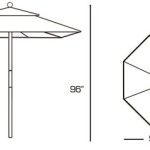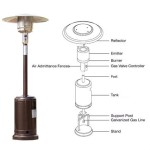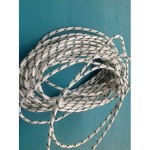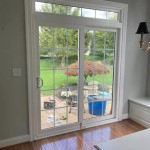Concrete Patio Floor Covering Ideas
Concrete patios, while durable and cost-effective, can sometimes lack the aesthetic appeal desirable for an outdoor living space. The cold, gray surface can feel uninviting and may not complement the surrounding landscaping. Fortunately, numerous floor covering options exist to enhance the look and feel of a concrete patio, transforming it into a stylish and comfortable extension of the home. Selecting the right covering involves considering factors such as budget, desired aesthetic, climate, maintenance requirements, and the existing condition of the concrete slab.
This article provides an overview of various concrete patio floor covering ideas, highlighting their advantages, disadvantages, and suitability for different applications. The information aims to assist homeowners in making informed decisions when choosing a covering that best suits their needs and preferences.
Applying Outdoor Rugs for Temporary Style and Comfort
Outdoor rugs provide a simple and versatile way to enhance the look and feel of a concrete patio without the need for permanent installations. They are available in a wide range of colors, patterns, sizes, and materials, allowing homeowners to easily customize the patio's appearance and create a more inviting atmosphere. The soft texture of rugs also provides a comfortable surface underfoot, particularly beneficial during warmer months when the concrete can become hot.
Outdoor rugs are typically made from synthetic materials such as polypropylene, polyester, or nylon, which are resistant to moisture, fading, and mildew. These materials are designed to withstand the elements and require minimal maintenance. Regular cleaning with a hose and mild detergent is usually sufficient to keep them looking their best. However, it is important to choose a rug that is specifically designed for outdoor use to ensure its durability and longevity. Placing a rug pad underneath the rug provides additional cushioning, prevents slipping, and protects the concrete surface from scratches.
One of the primary advantages of using outdoor rugs is their portability. They can be easily moved or removed as needed, allowing for flexibility in decorating and accommodating different events or seasons. For instance, a rug can be rolled up and stored during the winter months to protect it from harsh weather conditions. This also allows for easy cleaning of the concrete patio underneath. The cost-effectiveness of outdoor rugs is another significant benefit, making them an attractive option for homeowners on a budget. While high-end rugs can be expensive, there are many affordable options available that can still provide a significant aesthetic upgrade.
The main disadvantage of outdoor rugs is their susceptibility to dirt and debris. They can trap leaves, dirt, and other particles, requiring regular cleaning to maintain their appearance. While most outdoor rugs are mildew-resistant, they can still develop mildew in humid environments if not properly maintained. Additionally, rugs can fade over time if exposed to direct sunlight for extended periods. Despite these drawbacks, outdoor rugs remain a popular and practical choice for covering concrete patios due to their versatility, affordability, and ease of installation.
Utilizing Pavers for a Permanent and Elegant Transformation
Pavers offer a more permanent and visually appealing solution for covering concrete patios. Available in various materials, shapes, sizes, and colors, pavers can be arranged in intricate patterns to create a custom look that complements the surrounding landscape and architectural style of the home. Common paver materials include concrete, brick, natural stone, and porcelain, each offering unique aesthetic and performance characteristics.
Concrete pavers are a popular choice due to their durability, affordability, and versatility. They can be manufactured in a wide range of colors and textures, mimicking the look of natural stone or brick at a fraction of the cost. Brick pavers offer a classic and timeless aesthetic, adding warmth and character to the patio. Natural stone pavers, such as flagstone, slate, and travertine, provide a luxurious and natural look, but they are typically more expensive and require more specialized installation techniques.
Porcelain pavers are a relatively new option that is gaining popularity due to their exceptional durability, stain resistance, and low maintenance requirements. They are available in a wide range of colors and patterns, including realistic wood and stone looks. Porcelain pavers are also frost-resistant, making them suitable for climates with harsh winters.
Installing pavers over a concrete patio involves several steps. First, the concrete surface must be clean and level. A layer of compacted gravel is typically applied over the concrete to provide a stable base for the pavers. A layer of sand is then spread over the gravel to create a smooth and even surface. The pavers are laid on top of the sand in the desired pattern, and the joints are filled with sand or polymeric sand. Polymeric sand is a special type of sand that hardens when wet, preventing weeds from growing in the joints and discouraging ants from nesting.
Pavers offer several advantages over other patio covering options. They are durable, long-lasting, and require minimal maintenance. They can withstand heavy foot traffic and are resistant to cracking and fading. Pavers also provide excellent drainage, preventing water from pooling on the patio surface. The primary disadvantage of pavers is the cost of installation, which can be significantly higher than other options. However, the long-term benefits and aesthetic appeal of pavers often outweigh the initial investment.
Exploring Decking Options for a Raised and Comfortable Surface
Installing a deck over a concrete patio is another effective way to transform the space, creating a raised and comfortable surface that can significantly enhance the outdoor living experience. Decking materials include wood, composite, and aluminum, each offering different aesthetic and performance characteristics. Building a deck over concrete requires careful planning and execution to ensure proper drainage and structural integrity.
Wood decking is a classic choice, offering a natural and warm aesthetic. Common wood decking materials include cedar, redwood, and pressure-treated lumber. Cedar and redwood are naturally resistant to decay and insects, making them ideal for outdoor use. Pressure-treated lumber is chemically treated to resist decay and insects, but it requires regular maintenance to prevent warping and cracking. Wood decking requires regular staining or sealing to protect it from the elements and maintain its appearance.
Composite decking is a popular alternative to wood, offering the look and feel of wood without the maintenance requirements. Composite decking is made from a mixture of wood fibers and plastic, making it resistant to decay, insects, and fading. It is available in a wide range of colors and textures, and it requires minimal maintenance. However, composite decking can be more expensive than wood decking and can become hot in direct sunlight.
Aluminum decking is a relatively new option that is gaining popularity due to its exceptional durability, low maintenance requirements, and heat reflectivity. Aluminum decking is resistant to rust, corrosion, and fading, and it can withstand extreme weather conditions. It is also lightweight and easy to install. However, aluminum decking can be more expensive than other decking materials and may not offer the same natural aesthetic as wood.
Building a deck over a concrete patio involves constructing a frame of joists and beams over the concrete surface. The frame must be properly supported to ensure that the deck is stable and level. A waterproof membrane is typically installed between the concrete and the deck frame to prevent moisture from damaging the concrete. The decking boards are then attached to the frame using screws or hidden fasteners. Proper ventilation is crucial to prevent moisture buildup under the deck, which can lead to rot and decay.
Decking offers several advantages over other patio covering options. It provides a raised surface that can improve drainage and create a more comfortable walking surface. It can also add visual interest and value to the home. The primary disadvantage of decking is the cost of installation, which can be significant. However, the long-term benefits and aesthetic appeal of decking often outweigh the initial investment.
Beyond these primary options, homeowners can also consider other methods for covering their concrete patios. These include painting or staining the concrete, applying epoxy coatings, or installing interlocking tiles. Each of these options offers its unique set of advantages and disadvantages, and the best choice will depend on the homeowner's individual needs and preferences.
Painting or staining the concrete is a cost-effective way to enhance its appearance and protect it from the elements. However, painted or stained concrete can chip or peel over time, requiring periodic touch-ups. Epoxy coatings provide a durable and attractive surface that is resistant to stains and chemicals. However, epoxy coatings can be slippery when wet and may require a non-slip additive. Interlocking tiles are easy to install and provide a comfortable and durable surface. They are available in a wide range of colors and styles, but they can be more expensive than other options.
Ultimately, the best concrete patio floor covering is the one that best meets the homeowner's needs and budget, while also complementing the aesthetic of the home and landscape. Careful consideration of the factors outlined above will help homeowners make an informed decision and transform their concrete patio into a beautiful and functional outdoor living space.

The Solution To Decorating Concrete Patios Porches

5 Ways To Upgrade Your Concrete Patio

Patio Floor Ideas For Spring And Summer Run To Radiance

Jazz Up Your Front House With These Stunning Outdoor Flooring Ideas

14 Outdoor Flooring Options Ultimate Guide

10 Painted Concrete Patio Floor Ideas So Much Better With Age

What Is The Best Patio Flooring Over Concrete Options

Patio Floor Ideas For Spring And Summer Run To Radiance

9 Great Concrete Patio Ideas For A Makeover Remodelaholic

What Is The Best Patio Flooring Over Concrete Options








